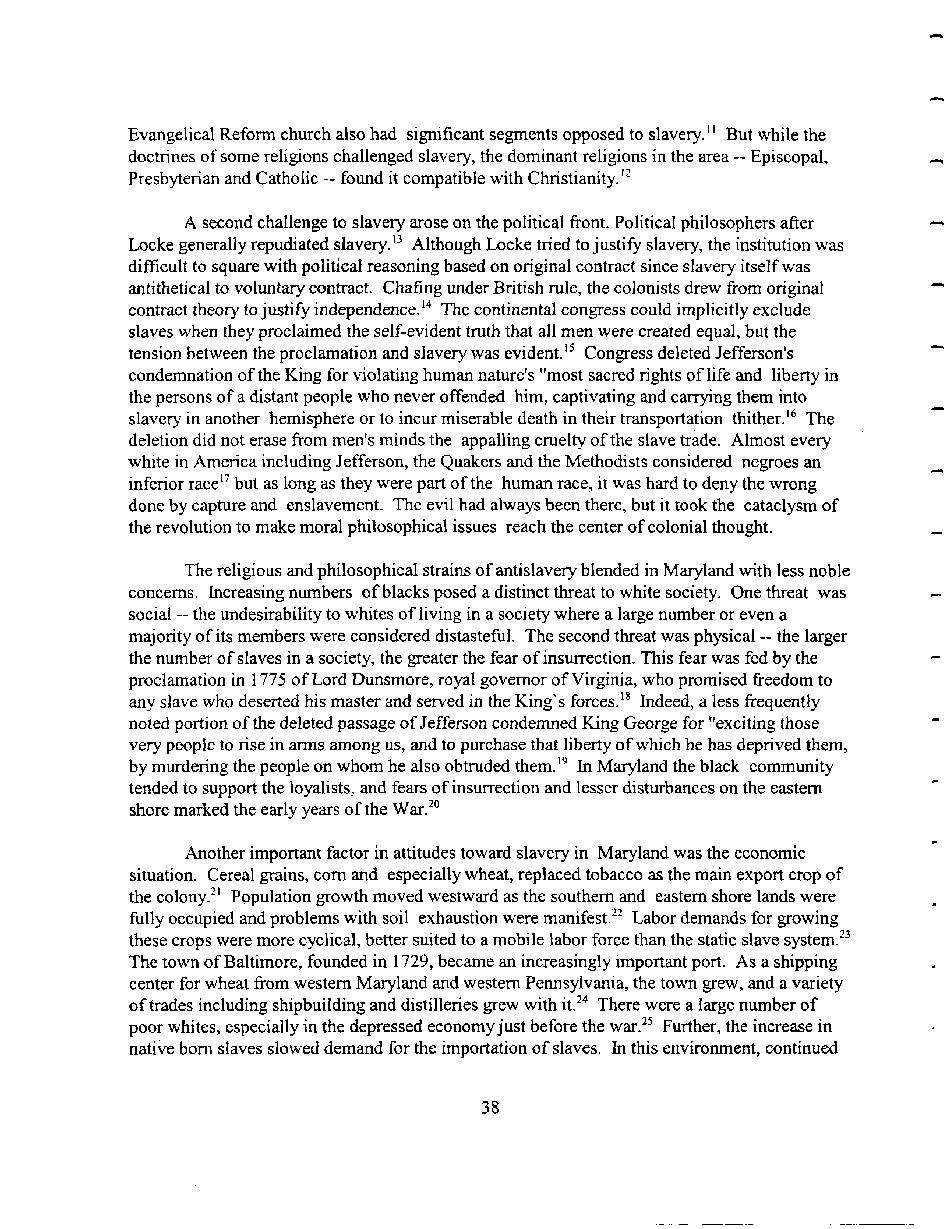|
Evangelical Reform church also had significant segments opposed to slavery.'' But while the
doctrines of some religions challenged slavery, the dominant religions in the area — Episcopal,
Presbyterian and Catholic — found it compatible with Christianity.12
A second challenge to slavery arose on the political front. Political philosophers after
Locke generally repudiated slavery.13 Although Locke tried to justify slavery, the institution was
difficult to square with political reasoning based on original contract since slavery itself was
antithetical to voluntary contract. Chafing under British rule, the colonists drew from original
contract theory to justify independence.14 The continental congress could implicitly exclude
slaves when they proclaimed the self-evident truth that all men were created equal, but the
tension between the proclamation and slavery was evident.15 Congress deleted Jefferson's
condemnation of the King for violating human nature's "most sacred rights of life and liberty in
the persons of a distant people who never offended him, captivating and carrying them into
slavery in another hemisphere or to incur miserable death in their transportation thither.16 The
deletion did not erase from men's minds the appalling cruelty of the slave trade. Almost every
white in America including Jefferson, the Quakers and the Methodists considered negroes an
inferior race17 but as long as they were part of the human race, it was hard to deny the wrong
done by capture and enslavement. The evil had always been there, but it took the cataclysm of
the revolution to make moral philosophical issues reach the center of colonial thought.
The religious and philosophical strains of antislavery blended in Maryland with less noble
concerns. Increasing numbers of blacks posed a distinct threat to white society. One threat was
social — the undesirability to whites of living in a society where a large number or even a
majority of its members were considered distasteful. The second threat was physical — the larger
the number of slaves in a society, the greater the fear of insurrection. This fear was fed by the
proclamation in 1775 of Lord Dunsmore, royal governor of Virginia, who promised freedom to
any slave who deserted his master and served in the King's forces.18 Indeed, a less frequently
noted portion of the deleted passage of Jefferson condemned King George for "exciting those
very people to rise in arms among us, and to purchase that liberty of which he has deprived them,
by murdering the people on whom he also obtruded them.19 In Maryland the black community
tended to support the loyalists, and fears of insurrection and lesser disturbances on the eastern
shore marked the early years of the War.20
Another important factor in attitudes toward slavery in Maryland was the economic
situation. Cereal grains, corn and especially wheat, replaced tobacco as the main export crop of
the colony.21 Population growth moved westward as the southern and eastern shore lands were
fully occupied and problems with soil exhaustion were manifest.22 Labor demands for growing
these crops were more cyclical, better suited to a mobile labor force than the static slave system.23
The town of Baltimore, founded in 1729, became an increasingly important port. As a shipping
center for wheat from western Maryland and western Pennsylvania, the town grew, and a variety
of trades including shipbuilding and distilleries grew with it.24 There were a large number of
poor whites, especially in the depressed economy just before the war.25 Further, the increase in
native bom slaves slowed demand for the importation of slaves. In this environment, continued
38
�
|

